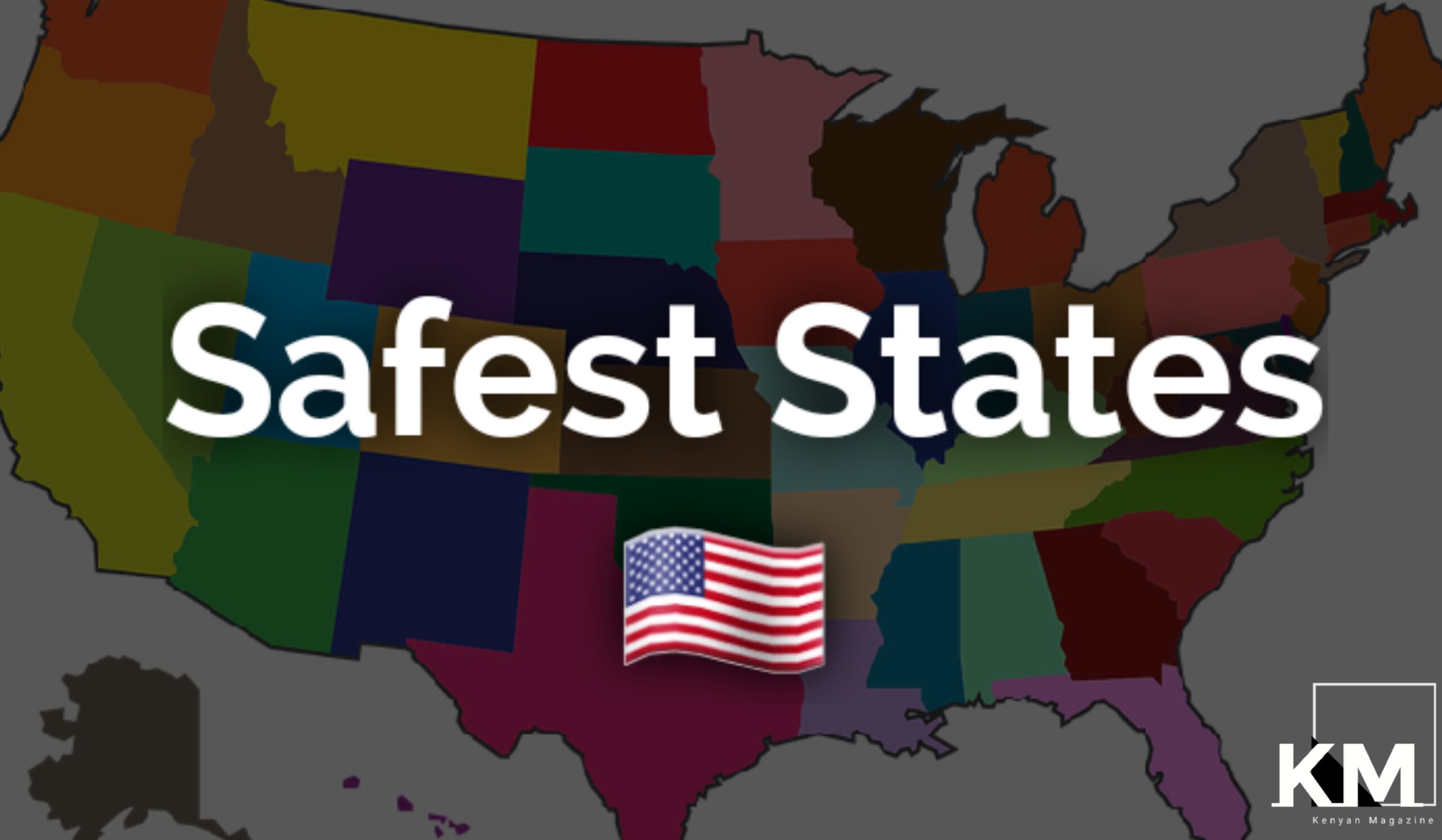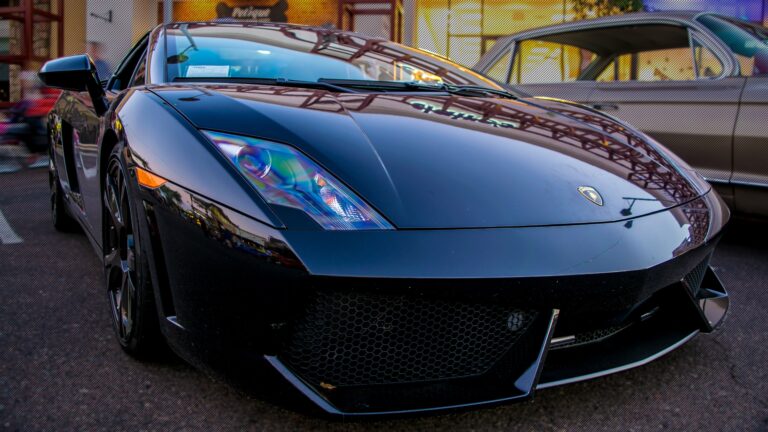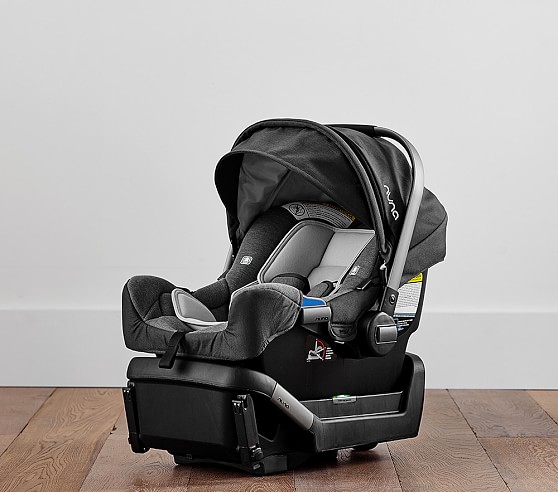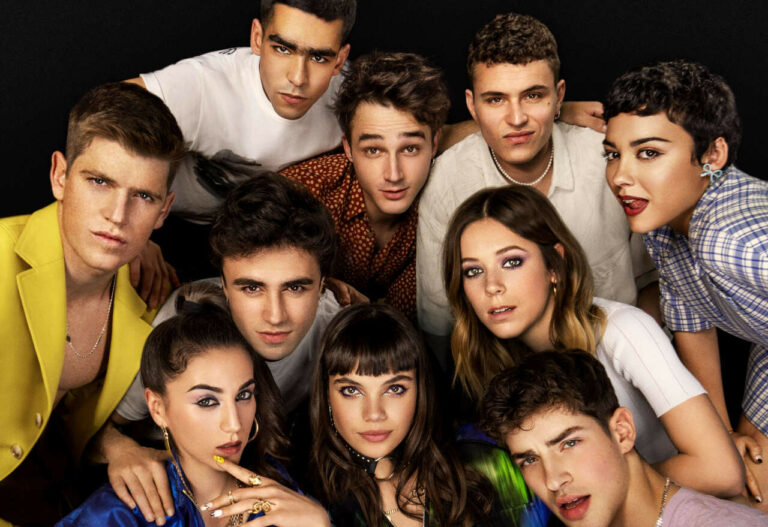Safest Car Seat Brand: Navigating the Path to Uncompromised Child Safety
Safest Car Seat Brand: Navigating the Path to Uncompromised Child Safety cars.truckstrend.com
The journey of parenthood is filled with countless decisions, but few weigh as heavily as ensuring the safety of your child. Among the myriad of baby products, the car seat stands paramount, serving as a critical lifeline in the event of an accident. When parents search for the "safest car seat brand," they are not merely looking for a label; they are seeking peace of mind, a guarantee that their most precious cargo is protected by the best technology and design available.
It’s crucial to understand from the outset that there isn’t one single "safest car seat brand" that definitively outshines all others in every single scenario. The concept of "safest" is multifaceted, encompassing rigorous testing, advanced safety features, ease of correct installation, and most importantly, proper usage. All car seats sold in the United States must meet stringent Federal Motor Vehicle Safety Standard (FMVSS) 213, and those sold in Europe must adhere to ECE R44 or the newer R129 (i-Size) standards. This means that any new car seat on the market has passed minimum safety requirements. However, certain brands consistently go above and beyond these minimums, investing heavily in research, development, and proprietary safety technologies that offer enhanced protection. This article will delve into what makes a car seat truly safe, explore brands renowned for their commitment to safety, and provide practical advice to ensure your child is as secure as possible on every journey.
Safest Car Seat Brand: Navigating the Path to Uncompromised Child Safety
Understanding the Pillars of Car Seat Safety
Before discussing specific brands, it’s essential to grasp the fundamental elements that contribute to a car seat’s safety profile. These are the benchmarks against which all reputable brands measure themselves:
- Crash Test Performance Beyond Standards: While all seats pass basic tests, leading brands often conduct their own, more rigorous crash testing, simulating real-world accident scenarios at higher speeds or with multiple impacts. Look for brands that highlight their internal testing protocols.
- Advanced Safety Features:
- Energy-Absorbing Foam (EPS/EPP): This type of foam, similar to what’s found in bicycle helmets, is crucial for absorbing impact energy during a crash, protecting the child’s head and body.
- Side-Impact Protection (SIP): Dedicated SIP systems, often involving deep side wings, multiple layers of foam, or special air cells, are designed to absorb forces from side collisions, which are particularly dangerous.
- Steel Frame/Reinforced Structure: Many premium car seats incorporate steel frames or reinforced plastic shells for added strength and durability, helping to maintain the seat’s integrity during a crash.
- Anti-Rebound Bar (ARB): Common in convertible and infant seats, ARBs rest against the vehicle’s seat back, reducing rebound motion in a frontal crash, which can significantly decrease head and neck injury risk.
- Load Leg/Stability Leg: Found primarily on European-style infant and convertible seats, this leg extends from the car seat base to the vehicle floor, absorbing energy and preventing rotation in a crash.
- Advanced LATCH/ISOFIX Systems: While all seats have LATCH, some brands offer innovative LATCH connectors or tensioning systems (like Britax’s ClickTight or Chicco’s SuperCinch) that make correct installation easier and more secure.

- Ease of Proper Installation: A car seat, no matter how advanced, is only as safe as its installation. Brands that prioritize intuitive installation features (e.g., clear indicators, self-tensioning systems, level guides) indirectly contribute to safety by reducing the likelihood of common installation errors.
- User-Friendly Harness System: A smooth, easy-to-adjust 5-point harness that fits snugly without twisting is vital. Look for non-rethread harnesses that allow height adjustment without disassembling the seat, encouraging proper fit as the child grows.
- Quality of Materials and Construction: Durable fabrics, high-quality plastics, and meticulous construction contribute to the longevity and continued safety performance of the seat over its lifespan.
Types of Car Seats and Their Safe Application
The "safest" car seat is also the one that is appropriate for your child’s age, weight, and height.
-
Infant Car Seats (Rear-Facing Only):
- Use: From birth until typically 22-35 lbs and 29-32 inches, or until the child outgrows the height limit (head is within 1 inch of the top of the shell).
- Safety Benefit: Provides the best protection for newborns and infants, allowing them to remain reclined and rear-facing, which is 5 times safer than forward-facing. The handle makes it easy to transport a sleeping baby.
- Key Consideration: Must be used with a base in the car.
-
Convertible Car Seats (Rear-Facing & Forward-Facing):
- Use: Can be used rear-facing from birth (or around 5 lbs) up to 40-50 lbs, and then forward-facing up to 65 lbs (or more) with a 5-point harness.
- Safety Benefit: Allows children to remain rear-facing for much longer, which is highly recommended by safety experts (AAP, NHTSA) until at least age 2, but ideally longer if the seat allows. Offers excellent longevity.
- Key Consideration: Not as portable as infant seats; they stay installed in the car.
-
All-in-One Car Seats (Rear-Facing, Forward-Facing, Booster):
- Use: Designed to last from birth through booster age (up to 100-120 lbs), transitioning through all stages.
- Safety Benefit: Provides long-term value and consistent safety features across multiple stages.
- Key Consideration: Can be bulky; the initial fit for newborns might not be as ideal as a dedicated infant seat.
-
Booster Seats (High-Back & Backless):
- Use: For children who have outgrown their forward-facing harnessed seats (typically 40 lbs and up, usually around age 5-8), until they are tall enough to properly fit an adult seat belt (around 4’9" or 57 inches, typically 8-12 years old).
- Safety Benefit: Positions the vehicle’s seat belt correctly over the child’s strongest body parts (collarbone and hips) for optimal protection.
- Key Consideration: Relies entirely on the vehicle’s seat belt for restraint; not suitable for children who cannot sit still.
Brands Renowned for Their Commitment to Safety
While no single brand can claim the title of "the safest," several manufacturers consistently stand out for their superior safety features, rigorous testing, and dedication to innovation. These brands often exceed minimum safety standards and have earned trust among parents and safety advocates.
- Britax: A leader in car seat safety, Britax is known for its proprietary SafeCell Impact Protection (a crumple zone in the base), steel frames, and the ClickTight installation system, which makes achieving a secure fit remarkably easy. Their seats often feature deep side walls and energy-absorbing components for superior side-impact protection.
- Chicco: Highly regarded for its user-friendliness and safety, particularly with their KeyFit infant seat line. Chicco incorporates features like ReclineSure leveling and SuperCinch LATCH tighteners, which simplify correct installation—a key factor in overall safety. Their convertible seats also offer robust protection and ease of use.
- Clek: A premium brand that emphasizes advanced safety engineering. Clek seats (like the Foonf and Fllo) feature a steel and magnesium substructure, an anti-rebound bar, and their unique REACT (Rapid Energy Absorbing Crumple Technology) safety system, which is inspired by vehicle crumple zones. They are designed for extended rear-facing use.
- Nuna: Known for sleek design and robust safety, Nuna car seats often include features like steel frames, aerospace aluminum, and tailor tech memory foam for advanced side-impact protection. Their RELX base for infant seats offers a true bolt-on installation, enhancing security.
- Maxi-Cosi: A popular European brand with a strong focus on side-impact protection (Air Protect technology) and ease of use. They offer a wide range of infant and convertible seats known for their comfortable padding and intuitive design.
- Graco: While offering a broader range of price points, Graco consistently provides solid safety features in their seats. Many models feature steel-reinforced frames, energy-absorbing foam, and undergo rigorous crash testing. They are a reliable choice for budget-conscious parents seeking certified safety.
Practical Advice for Maximizing Car Seat Safety
Even the most technologically advanced car seat from a top brand is ineffective if not used correctly. Here’s actionable advice:
- Read the Manual (Cover to Cover): Every car seat has unique features and installation requirements. The manual is your primary safety guide.
- Check for Proper Installation:
- The "1-Inch Rule": Once installed, the car seat should not move more than one inch side-to-side or front-to-back at the belt path.
- Check the Angle: For rear-facing seats, ensure the recline angle is correct for your child’s age (most have built-in level indicators).
- LATCH vs. Seat Belt: You should not use both LATCH and the seat belt to install the same car seat unless the manual explicitly allows it (which is rare). Choose one method and ensure it’s tight.
- Ensure Proper Harness Fit:
- Strap Height: For rear-facing, harness straps should be at or below the child’s shoulders. For forward-facing, they should be at or above the child’s shoulders.
- Snugness: The harness should be snug enough that you cannot pinch any excess webbing at the child’s collarbone.
- Chest Clip Position: The chest clip should be at armpit level.
- Rear-Facing for as Long as Possible: The American Academy of Pediatrics recommends keeping children rear-facing until they reach the maximum weight or height limit for their convertible car seat, typically well past their second birthday. This offers superior protection for the head, neck, and spine.
- Never Buy a Used Car Seat (Unless You Know Its History): Car seats have expiration dates (typically 6-10 years from manufacture) and can be compromised by crashes or missing parts. Unless you know the seat’s full history, it’s best to buy new.
- Avoid Aftermarket Products: Do not use inserts, toys, or padding not specifically approved by the car seat manufacturer, as they can interfere with the seat’s safety performance.
- Register Your Car Seat: Registering your car seat allows the manufacturer to notify you in case of a safety recall.
Common Challenges and Solutions
- Challenge: Difficulty Achieving a Tight Installation.
- Solution: Watch manufacturer installation videos, read the manual again carefully, use your body weight to push down on the seat while tightening, or seek help from a certified Child Passenger Safety Technician (CPST). Many fire departments, hospitals, or local police stations offer free car seat checks.
- Challenge: My Child Hates the Car Seat.
- Solution: Ensure the harness isn’t too tight or too loose, check for comfortable clothing, use a small, manufacturer-approved mirror for rear-facing infants, or engage them with soft, safe toys. Consistency and routine also help.
- Challenge: Understanding Expiration Dates.
- Solution: Car seats expire due to wear and tear, material degradation (plastics can become brittle), and advancements in safety technology. The expiration date is usually stamped on the seat’s label or molded into the plastic. Do not use an expired seat.
- Challenge: Transitioning Between Seat Types.
- Solution: Follow height and weight limits strictly. Do not rush to transition a child out of a harnessed seat into a booster, or out of a booster into a seat belt. Ensure they meet all criteria for the next stage.
Safest Car Seat Brand: Example Models and Price Ranges
Here’s a table showcasing examples of highly-rated car seats from brands renowned for their safety features and performance. Prices are approximate and can vary.
| Brand | Model Example | Type | Key Safety Features | Approximate Price Range |
|---|---|---|---|---|
| Britax | Boulevard ClickTight ARB | Convertible | ClickTight Installation System, SafeCell Impact Protection (crumple zone), Steel Frame, Deep Energy-Absorbing Foam, Anti-Rebound Bar, 2 Layers of Side Impact Protection. | $300 – $380 |
| Chicco | KeyFit 30 | Infant | ReclineSure Leveling Foot, RideRight Bubble Levels, SuperCinch LATCH Tightener, Energy-absorbing foam, Removable head and body support for newborns. | $200 – $250 |
| Clek | Foonf | Convertible | REACT (Rapid Energy Absorbing Crumple Technology) Safety System, Steel and Magnesium Substructure, Anti-Rebound Bar, Extended Rear-Facing Capabilities, Advanced Side Impact Protection with adjustable headrest, Crypton fabric. | $450 – $550 |
| Nuna | PIPA Lite RX | Infant | Aeroflex Foam, Tailor Tech Memory Foam, Steel-reinforced base, Crumple Zone within stability leg, True lock™ base installation, Lightweight design. | $400 – $550 |
| Maxi-Cosi | Pria Max 3-in-1 | All-in-One | GCell® Side Impact Protection (crushing hexagonal cells), Air Protect® for head protection, CosiCushion™ fabrics, Out-of-the-way spring assist harness system, QuickFit harness. | $300 – $380 |
| Graco | 4Ever DLX 4-in-1 | All-in-One | Simply Safe Adjust™ Harness System, Graco ProtectPlus Engineered™ (rigorous crash testing), Steel-reinforced frame, Energy-absorbing foam, 6-position recline, 10-position headrest. | $280 – $350 |
Note: This table provides examples and general price ranges. Prices can vary based on retailer, sales, and specific fabric/color options. Always check the latest models and features.
Frequently Asked Questions (FAQ)
Q1: Do car seats really expire? Why?
A1: Yes, car seats expire. The typical lifespan is 6-10 years from the date of manufacture (check the label on your seat). Expiration dates are crucial because plastic components can degrade over time due to temperature fluctuations and sunlight exposure, materials can wear out, and safety standards evolve. Additionally, manufacturers cannot guarantee the long-term integrity of the seat beyond its expiration.
Q2: When should I switch my child from an infant seat to a convertible seat?
A2: You should switch when your child reaches the maximum weight or height limit of the infant car seat. For height, this is typically when their head is less than 1 inch from the top of the car seat’s shell. It’s always safest to keep your child rear-facing in a convertible seat for as long as possible, ideally until they outgrow the rear-facing weight or height limit of that convertible seat (often around 40-50 lbs and 40-49 inches), which is typically well beyond age 2.
Q3: Is a more expensive car seat always safer?
A3: Not necessarily. All car seats sold new in the US must meet the same federal safety standards. However, more expensive seats often include advanced features like steel frames, specialized energy-absorbing materials, enhanced side-impact protection, and easier installation systems, which can offer a higher level of protection and reduce the chance of user error. Investing in a mid-to-high range seat from a reputable brand often provides excellent value in terms of safety features and ease of use.
Q4: Can I use a car seat that has been in a crash?
A4: Generally, no. NHTSA (National Highway Traffic Safety Administration) recommends replacing a car seat after a moderate or severe crash. Some manufacturers allow continued use after a minor crash, but only if all of the following conditions are met: the vehicle was able to be driven away, the vehicle door nearest the car seat was undamaged, no occupants were injured, airbags did not deploy, and there is no visible damage to the car seat. When in doubt, replace it.
Q5: What’s the best way to clean my car seat?
A5: Always refer to your car seat’s manual for cleaning instructions. Most covers are machine washable on a gentle cycle with mild detergent, but they should be air-dried. Do not use harsh chemicals, bleach, or abrasive cleaners on any part of the car seat, as they can degrade materials. The harness straps usually should only be spot-cleaned with water and mild soap, as washing them in a machine or with harsh chemicals can weaken the webbing.
Conclusion
The quest for the "safest car seat brand" is a deeply personal and crucial one for every parent. While there isn’t a single, universally "safest" brand, understanding the core principles of car seat safety—rigorous testing, advanced features, and correct usage—empowers you to make an informed decision. Brands like Britax, Chicco, Clek, Nuna, Maxi-Cosi, and Graco have consistently demonstrated a commitment to exceeding safety standards, offering innovative features that provide enhanced protection for children.
Ultimately, the safest car seat is not just about the brand or the price tag; it’s the one that fits your child correctly, fits your vehicle securely, and is used properly on every single ride. By prioritizing proper installation, correct harness fit, and extended rear-facing use, you can maximize your child’s safety and drive with the ultimate peace of mind. Your child’s safety is non-negotiable, and with careful research and adherence to best practices, you can ensure they are protected on every journey, from the very first ride home.




